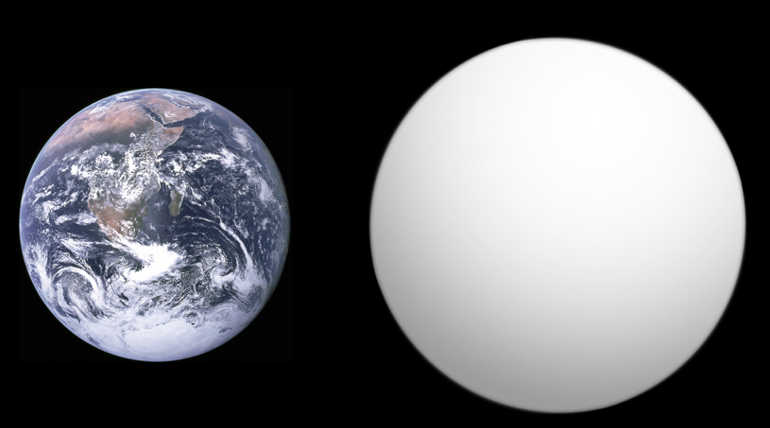ads
Researchers Created The Inner Core Of An Exoplanet In Lab To Study Its Properties
Gokul Saravanan (Author) Published Date : Apr 27, 2018 17:31 ISTScience
June Wicks, an assistant professor at John Hopkins University explained in her recent publication that a team of physicists led by her has made an attempt to study a Super-Earth by recreating the core conditions of a Super Earth under lab environment by using some sort of iron-silicon composition material and laser beams.
They studied the core of a Super-Earth by pairing up some X-ray source with the metal sample that already subjected to extreme pressure and the beams of bright Omega laser. They initiated this study as they considered that only way to study a Super Earth is stimulating its rocky core. The response that was given by the iron and silicon alloys to an extraordinary pressure pave a way to discover new insights on the cores of Super-Earth.
They literally used different samples that one resembling Earth with iron with 7 percent of silicon core and other resembling the Kepler-10B an exoplanet with higher silicon level of up to 15 percent. Later the samples had been subjected to shot down by some laser beams in the distance of fewer than 3 centimeters.
The research team had compressed the samples for only a few extend of time, the time extent of only a few billionths of one second under strong laser field. That resulted in highest-pressure X-ray diffraction and the recorded the pressure of 1314 GPa(gigapascal).
According to the researchers, this new trial could possibly shed lights on the internal study of an exoplanet as the silicon composition had ended up some crystal structural formation after the experimentation.
As per the result of the study, the lower silicon composition sample formed a hexagonal crystal formation where the higher silicon composition formed a body-centered cubical formation. Experts considered that the structural formation is the basic study to explore the inner core and formation of a planet.
Super-Earth is generally defined for their mass that is much greater than earth and lower than Neptune and Uranus. Certainly, the mass of a planet won't reveal the character of a planet like a temperature, orbital properties etc...but revealing the core property of an exoplanet may reveal those things. Such revealing may help future generations of the earth to make habitation in those super-earths in future.
As far as we know pure iron is not a realistic thought in the core of a planet some light elements playing some important roles by its composition the team plans to perform few more experiments using the composition of Carbon, Lithium, Hydrogen etc...that may help to disclose the key properties of a planet like physical and chemical properties.
Researchers Created The Inner Core Of An Exoplanet In Lab To Study Its Properties
Related News


